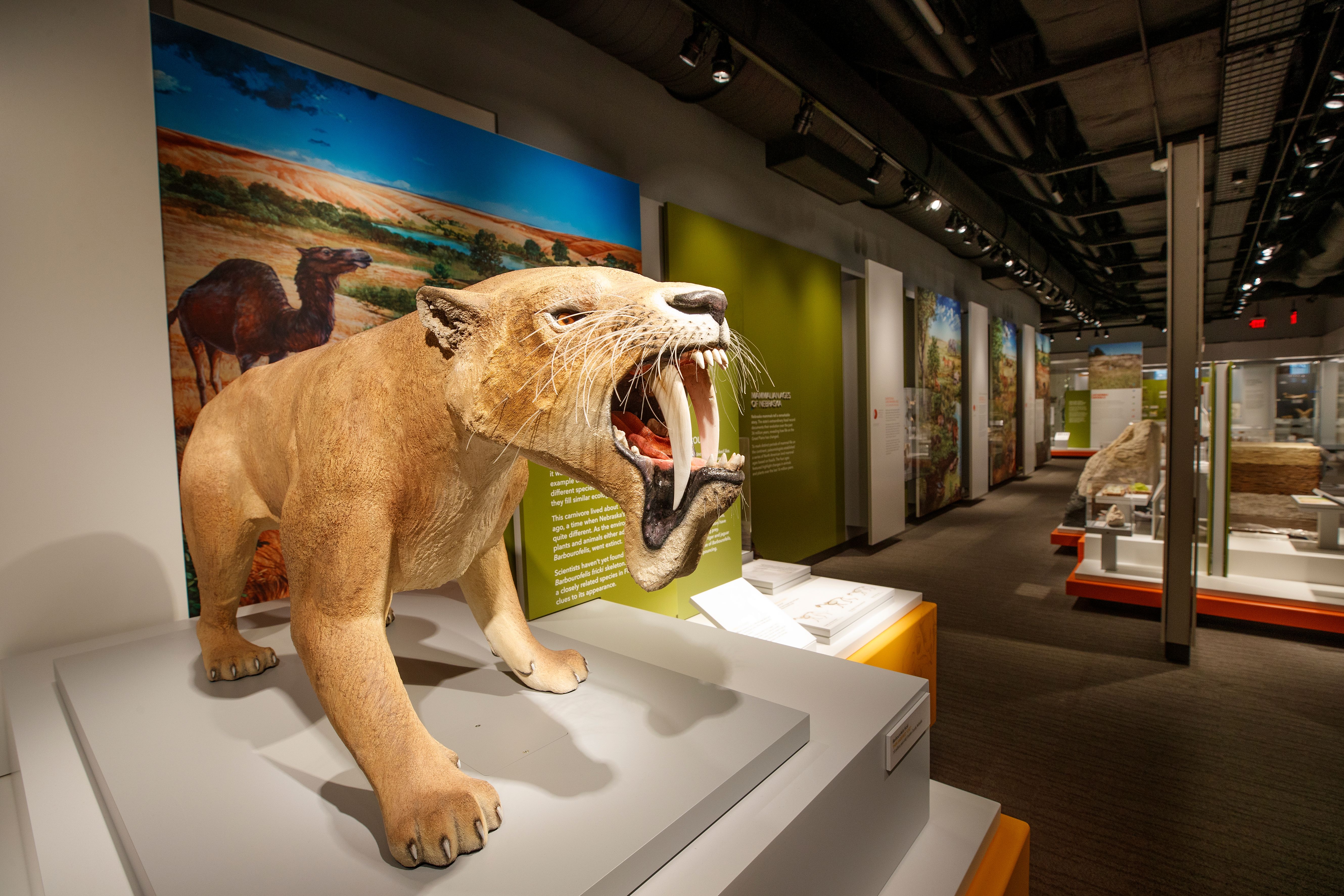
About Us
About Us
Sparking people's interest in the natural world and preserving it for future generations.
Established in 1871, the University of Nebraska State Museum is the state's premier museum of natural history. The mission of Museum is to discover and disseminate knowledge about the natural world through research and education.
The Museum is accredited by the American Alliance of Museums and is a proud Smithsonian Affiliate.
Visitors to Morrill Hall will find interactive exhibits featuring Nebraska’s past and present biological diversity, and its cultural heritage with a dedicated First Peoples of the Plains gallery. The four-level, 70,000 square foot museum is located on the University of Nebraska-Lincoln City Campus near the corner of 14th and Vine Streets in Lincoln, Nebraska.
Morrill Hall is known for its paleontological collections, especially its iconic Elephant Hall, where visitors will see the world's largest articulated fossil Columbian mammoth alongside a unique collection of Nebraskan fossil elephants. Also featured are interactive paleontology exhibits including a Jurassic dinosaur gallery. In addition to these iconic paleontology exhibits, the recently renovated fourth floor includes a Smithsonian-inspired Visible Lab, hands-on Science Exploration Zone, and Sustainable Earth gallery with a 5-foot diameter digital globe. The onsite Mueller Planetarium provides visitors with additional opportunities to explore our Universe and our place in it. In addition to the permanent galleries, the museum hosts temporary exhibits on diverse topics.
As an active University-based research museum, faculty curators, students and staff maintain over 13 million specimens, ethnographic and archeological objects.
Research collections include:
Anthropology - Botany - Entomology - Geology - Invertebrate Paleontology - Parasitology - Vertebrate Paleontology - Zoology
The University of Nebraska State Museum and its Family of Museums aspires to:
• Promote scientific understanding and public stewardship of the natural and cultural heritage of Nebraska through our innovative exhibits and programs
• Inspire K12 students to pursue careers in STEM and related fields by connecting them with scientists and scientific research
• Conduct internationally recognized, collections-based research and build collections and researchers’ access.
• Train the next generation of undergraduate and graduate students studying biological diversity, environmental processes, and evolving human cultures





